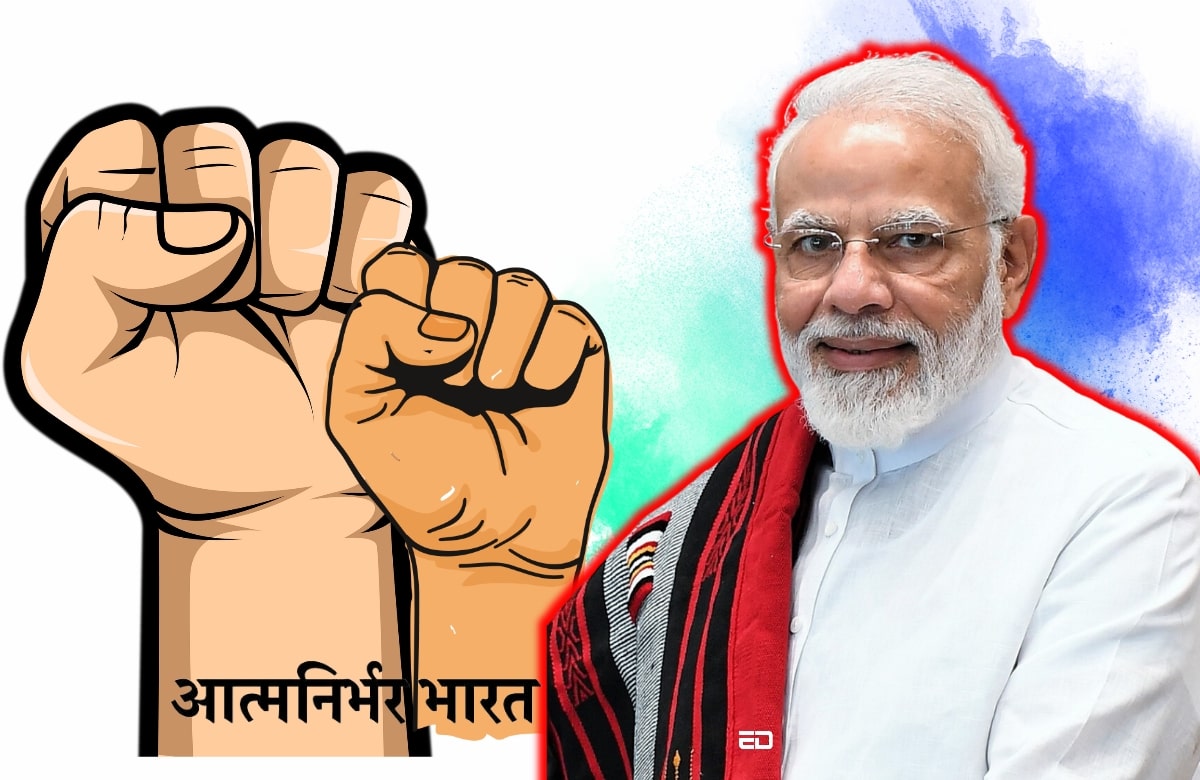Aatmanirbhar Bharat, meaning “self-reliant India,” is an ambitious initiative launched by the Government of India in May 2020. It aims to transform the nation into a resilient and self-sustaining economy by promoting domestic manufacturing, fostering innovation, and enhancing infrastructure development.
Production-Linked Incentive (PLI) Scheme
One of the central pillars of the Aatmanirbhar Bharat initiative is the Production-Linked Incentive (PLI) scheme. This scheme offers financial incentives to domestic manufacturers in sectors such as electronics, pharmaceuticals, automobiles, and textiles. By providing support based on incremental sales, the government encourages companies to boost production, enhance competitiveness, and reduce dependence on imports.
The PLI program is currently offered in 14 manufacturing industries, including those that produce mobile phones, medical devices, telecom & networking products, automobiles and auto components, pharmaceuticals, drugs, white goods, specialty steel, electronic products, food products, textile products, solar PV modules, and drones and drone parts.
The PLI scheme has gained significant traction, attracting both domestic and foreign companies to invest in India. It not only drives economic growth but also strengthens India’s position as a global manufacturing hub.
National Infrastructure Pipeline (NIP)
Infrastructure development plays a vital role in a nation’s progress, and the Aatmanirbhar Bharat initiative recognizes its significance. The National Infrastructure Pipeline (NIP) was launched to channelize investments into sectors like energy, transport, and social infrastructure.
The government has committed substantial funds to the NIP, aiming to enhance connectivity, create employment opportunities, and drive economic development across the country.
The NIP ensures the creation of world-class infrastructure that fosters sustainable growth, attracts investment, and improves the quality of life for citizens.
Read More: From Polio To COVID Vaccine: How India Went From Getting Aid To Giving Aid
Privatization and Disinvestment
To foster efficiency, competitiveness, and innovation, the Aatmanirbhar Bharat initiative emphasizes privatization and disinvestment. By reducing the government’s involvement in certain state-owned enterprises, it aims to enhance their performance, attract private sector participation, and unlock their true potential.
Through privatization and disinvestment, the government seeks to create a business-friendly environment that encourages investment, promotes healthy competition, and drives economic growth.
Progress has slowed for other companies, aside from the sale of IDBI Bank, which is already underway, according to a person involved with the privatization drive who asked to remain anonymous because the conversations are private. The individual warned that sales could be further hindered by India’s national elections the following year, particularly for businesses dealing with legal or labor concerns. Market observers are now dubious that the administration will give privatization a priority during the election year.
Digital India and Innovation
The Aatmanirbhar Bharat initiative recognizes the pivotal role of digital technologies and innovation in shaping India’s future. It places a strong emphasis on strengthening the Digital India campaign and promoting indigenous technological solutions. Efforts are underway to enhance digital infrastructure, expand internet connectivity, and bridge the digital divide, particularly in rural areas.
By fostering a vibrant ecosystem for startups and encouraging research and development, the government aims to harness the power of technology to transform various sectors and drive inclusive growth.
The Digital India Bill is now being discussed with stakeholders; after that, it will be made available for public comment. The bill, which aims to replace the 23-year-old Information Technology Act, will be introduced by the administration during the winter session of the Parliament.
In addition to defining rules for emerging technology, the Digital India Bill will also define rules for big technology. These rules will include accountability for platforms like social media companies and misinformation, as well as different rules for various intermediaries like e-commerce, search engines, and gaming.
Make in India
While the Make in India campaign predates the Aatmanirbhar Bharat initiative, it remains a key component of India’s self-reliance journey. Make in India aims to position India as a global manufacturing hub by encouraging domestic production, attracting foreign investment, and promoting the export of locally manufactured goods.
The Aatmanirbhar Bharat initiative strengthens the Make in India campaign by providing policy support, infrastructure development, and financial incentives to bolster domestic manufacturing capabilities.
Boeing’s expanding investments in India highlight not only the company’s strong cooperation with the nation but also the promising future of the US-India economic partnership. Boeing last week announced additional service agreements in India as well as the completion of Air India’s order for up to 290 brand-new Boeing aircraft at the Paris Air Show.
The Aatmanirbhar Bharat initiative is an ambitious and comprehensive plan to enhance India’s self-reliance and economic resilience. Through measures like the PLI scheme, NIP, privatization, digital transformation, and Make in India, the government seeks to propel India towards becoming a globally competitive economy.
Though the government is surely working towards an economically sound India, what are your views on the initiative? Let us know in the comments.
Image Credits: Google Images
Feature image designed by Saudamini Seth
Sources: Times of India, The Hindu, NDTV
Find the blogger: Pragya Damani
This post is tagged under: aatmanirbhar bharat, narendra modi, pm modi, pli scheme, national infrastructure pipeline, privatization and disinvestment, digital india and innovation, make in india
Disclaimer: We do not hold any right, copyright over any of the images used, these have been taken from Google. In case of credits or removal, the owner may kindly mail us.


































